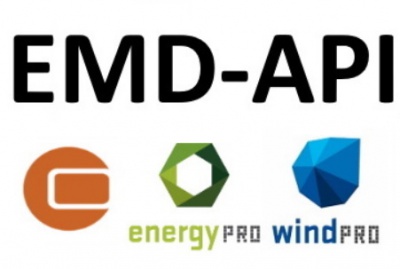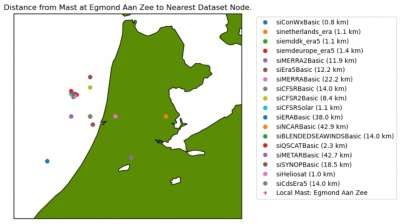Difference between revisions of "EMD-API - Climate Data Access"
m |
|||
| Line 1: | Line 1: | ||
== Origin and Purpose == | == Origin and Purpose == | ||
| − | [[File:EMDAPI_451x303.jpg|thumb| | + | [[File:EMDAPI_451x303.jpg|thumb|400px|right]]EMDAPI is a software library by EMD delivering a unified interface to a wide range of climate data. EMDAPI helps consultants, analysts and scientists working with high-resolution climate data in achieving their goals in an efficient way, it has the following key-features: |
* '''40+ climate datasets''': EMDAPI provides access more than 40 of the best climate datasets and allows access to more than 1Pb of data. | * '''40+ climate datasets''': EMDAPI provides access more than 40 of the best climate datasets and allows access to more than 1Pb of data. | ||
| Line 16: | Line 16: | ||
== Python - Installation and Test == | == Python - Installation and Test == | ||
| − | [[Image:EgmondAanZee.jpg|thumb| | + | [[Image:EgmondAanZee.jpg|thumb|400px|right|Data nodes near the Egmond Aan Zee Offhore ]]The simplest way to use the EMDAPI with python is to install the client software in a virtual environment. If you are using CONDA or [https://docs.conda.io/en/latest/miniconda.html MINICONDA], we recommend that you create a new virtual environment and use a recent 3.x version of python. When the virtual environment is created, then activate the environment. |
<pre> | <pre> | ||
conda create -n emdapi python=3.8 | conda create -n emdapi python=3.8 | ||
Revision as of 16:47, 25 August 2020
Origin and Purpose
EMDAPI is a software library by EMD delivering a unified interface to a wide range of climate data. EMDAPI helps consultants, analysts and scientists working with high-resolution climate data in achieving their goals in an efficient way, it has the following key-features:
- 40+ climate datasets: EMDAPI provides access more than 40 of the best climate datasets and allows access to more than 1Pb of data.
- Unified interface: The unified interface which allows for integration to internal processes and tools - and also very efficient uncertainty analysis with gigabytes of data easily accessed.
- Trusted datasets: The EMDAPI builds upon the trusted data-bases and data-sources that have been used through the online-data services in windPRO for more than a decade.
- Built on open standards: he EMDAPI is a REST based service that implements the OpenAPI standard].
- Available from any development tool: Access to the climate databases is available from your preferred development platform - C#, R, python, html, java, php, scala and swift. Just use the OpenAPI tools to generate the client software for your preferred platform.
API Access
The API is currently (August 2020) in beta-release. To see more documentation and to access the data-services, please visit the API through the following URL:
Python - Installation and Test
The simplest way to use the EMDAPI with python is to install the client software in a virtual environment. If you are using CONDA or MINICONDA, we recommend that you create a new virtual environment and use a recent 3.x version of python. When the virtual environment is created, then activate the environment.
conda create -n emdapi python=3.8 conda activate emdapi
Install the required packages needed in order to do data-science and use the examples provided within the jupyter notebooks:
conda install pandas numpy matplotlib basemap basemap-data-hires jupyter
Download the zipped-file holding the OpenAPI python client. Unpack the file and install it within your virtual environment:
python setup.py install
Give the installation a test-drive using the jupyter notebooks provided
jupyter notebook

